OCTOPATH TRAVELER II PC Review
PC
OCTOPATH TRAVELER II matches the original's quality and improves upon it in almost every way.
Reviewed by Rayan on Feb 26, 2023
Unsurprisingly, the sequel to 2018's Octopath Traveler would be another nostalgic throwback to the JRPG's heyday. The original placed the bar high featuring Square Enix's evolutionary HD-2D visual style. It looked and felt like a typical Japanese role-playing game, what with its Final Fantasy-inspired setting and turn-based combat system, but it had more to it that made the game stand out.
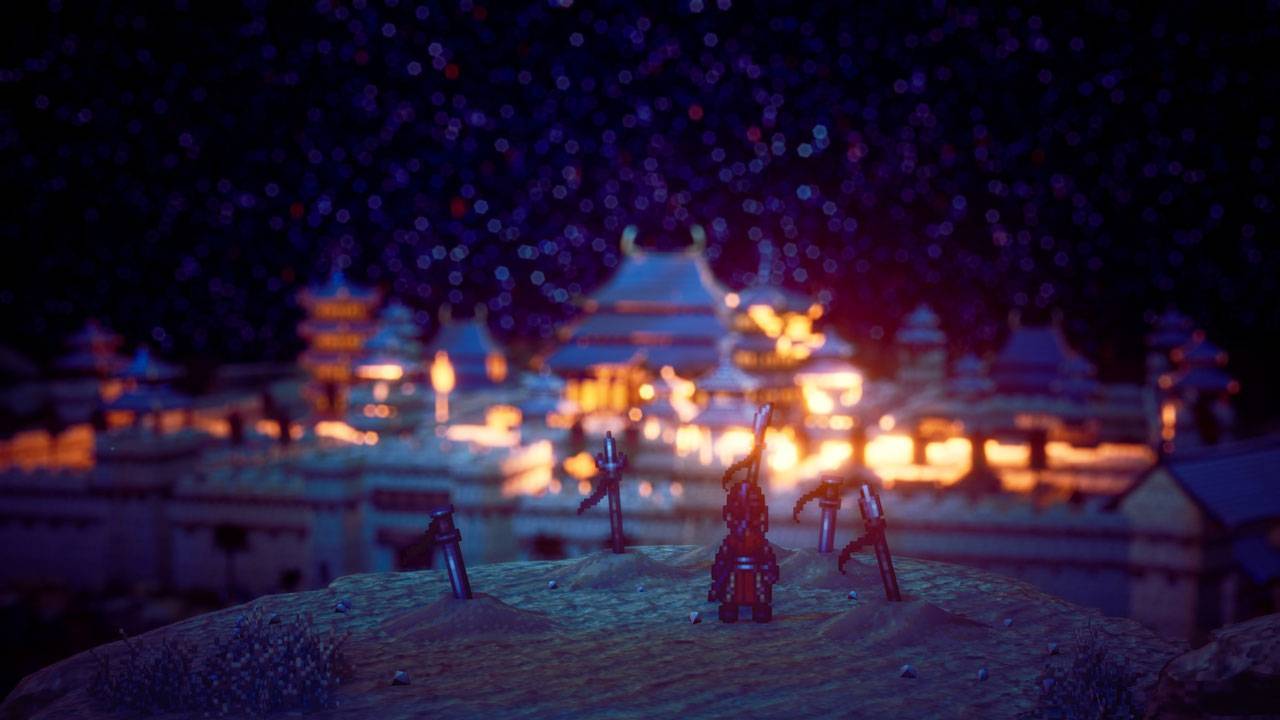
It was not completely perfect, but its drawbacks did not ruin the experience. Similarly, the sequel vastly improves upon many aspects without significantly altering its core gameplay and bringing an age-old formula to a new generation of JRPG fans with no compromises. These improvements to OCTOPATH TRAVELER II take the series to a much higher level set by the original.
Square Enix and Acquire have attempted a rebranding by releasing a new chapter that, for better and worse, doesn't stray too far from the original. However, even though this sequel shares many of the upsides of its predecessor, that does not make them identical, and it has no real ties to the original game beyond the fact that it uses the same basic framework.
OCTOPATH TRAVELER II maintains the same visual style, soundtrack, and gameplay as the original but improves upon every aspect that made the first game enjoyable. Although some of the problems with the original are still here, the sequel enriches the formula to increase its appeal to audiences who didn't enjoy the first installment.
In the same vein as the first game, OCTOPATH TRAVELER II traces the adventures of eight unique protagonists. You begin the game by taking control of one of eight characters, progressing through that character's opening chapter before recruiting the remaining protagonists and continuing their stories. The game's other seven playable protagonists can be found and added to your party as you travel around, each with a prologue that must be completed before you can move forward.

Following any of the eight characters' chapters is entirely up to you. Their motivations for exploring the globe range from escaping a tyrannical ruler to fulfilling their ambitions. You meet each member of the protagonists individually, but their shared yearning to see the world ultimately unites them into a unified pack.
Rather than having a single overarching story, OCTOPATH TRAVELER II has eight individual stories for its playable characters to experience. Even though you're traveling with others and sharing supplies, knowledge, and even conversation, each of you is still experiencing your own story independently.
While each protagonist and plot can stand on its own as a concise narrative, the dynamic interplay between them in a well-crafted piece can significantly enhance the storytelling perspective. Their tales cover such a broad range of topics that I was constantly surprised and engaged.
Along the way, we'll meet a dancer, a thief, a warrior, a hunter, a healer, a priest, a scholar, and a merchant. To follow in her mother's footsteps as a famous performer, dancer Agnea moves away from her hometown.
The thief Throne sets out on a search for his mentors so that he can break free of their influence. The brave warrior Hikari vows to restore the throne of Ku and take revenge for his late father.

A hunter from an island, Ochette is on a chase for three legendary beasts to prevent a disaster. Castti, a healer, has forgotten who she is and has been alleged of wrongdoings she cannot possibly have committed.
The priest Temenos is curious about the church's dark secrets after a priest's murder. The scholar Osvald was wrongfully detained before discovering new magic. And finally, Partitio, a merchant trying to stop poverty.
The story begins with whomever protagonists you've picked, and if the party re-encounters any of its previous members, they can either continue the story at that point or continue it eventually in a tavern.
The four main types of path actions are item acquisition, information gathering, recruitment, and knocking out the target. Characters typically have access to two of these, though this number can increase or decrease depending on the time of day.
Hikari can bribe NPCs or challenge them to battle so she can learn new skills. Temenos can interrogate and recruit new characters. Throné can rob shops during the day and set up ambushes at night.
It's an added bonus that the day or night can be switched anytime and doesn't require resting or traveling to any spot. The toggle between night and day also changes the world's adversaries.
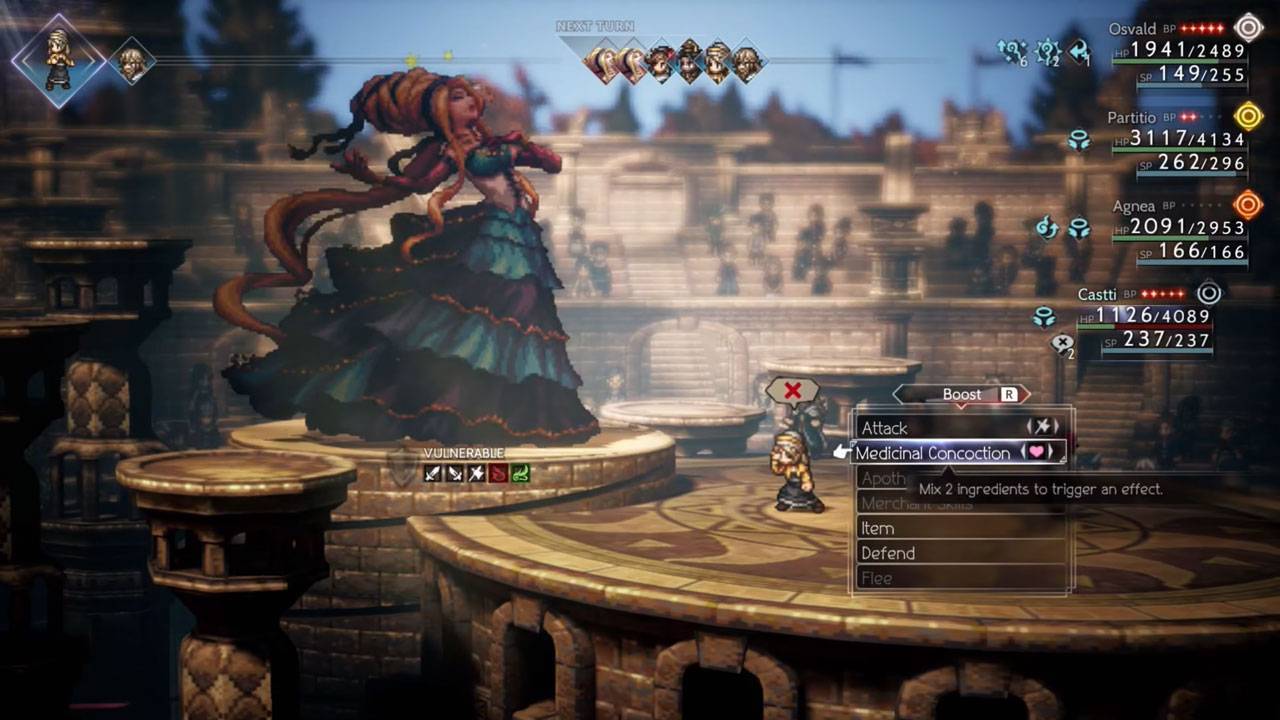
It was criticized in the original that the protagonists didn't have their stories interactions, and it's still a concern here. They are each telling stories that have nothing to do with anyone else in the group.
There may be some party small talk that you choose to participate in, but typically these interactions feel more like an opportunity to playfully tease or make digressions than to contribute anything substantive to the overall narrative.
Crossed Paths chapters have been added to the game, which is a major departure from the previous title despite each chapter focusing on a single character with the others serving as supporting cast.
These sections are dedicated to recounting the events occurring when two main characters cross each other's paths. These chapters are satisfactory, though they serve primarily as intervals leading to the climactic conclusion.
OCTOPATH TRAVELER II's battle mechanics mirror its predecessor's, but the tweaks add new layers of depth and make the characters more fun to control.
The turn-based battle is present in every single story, and the vast array of professions, abilities, and weaponry is more than enough to keep things interesting while teaching you the ropes. Turn-based combat works similarly; you can accrue points between turns to unleash devastating combos.

The ability to combine secondary classes to create unique builds is back, with more nuanced options for Latent Powers and Path Actions' influence in combat. Latent Powers are unique abilities unlocked by defeating foes and sustaining damage yourself.
These grant useful advantages in battle, such as giving Partitio an unlimited supply of action points or giving Hikari a menu of deadly assaults.
It's important to emphasize the variety of combat styles represented by the members of your party. A few modifications are being made. The main cast is the same as the original, but there have been some tweaks to the team's chemistry and new additions to the supporting cast.
Warrior has access to a wide range of weapons and can pick up new skills from each battle. The Merchant can recruit allies to fight on your side.
The Scholar can assess their weaknesses and unleash an extensive array of elemental attacks. In contrast to the original, scholar is now less unstoppable and much more realistic. Pets captured by the Hunter can be used at will, and she now has superior skills.
Apothecary specializes in single-target healing and revives among the two healers, while Cleric heals the entire party.
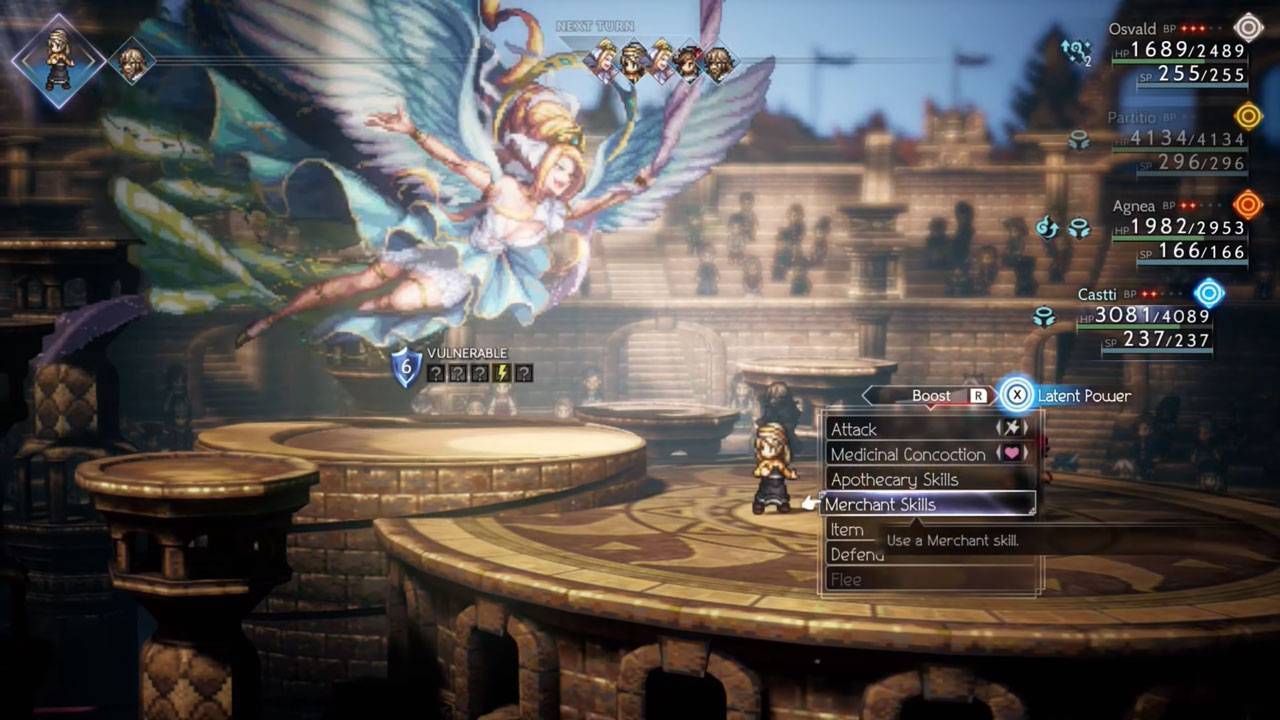
When your enemies take damage from your weapons or skills they are vulnerable to, the break allows you to deal maximum damage to them. This structure appears highly versatile and tactical due to the breadth of abilities and the variety of play styles available to each character. Also, there's a lot to consider outside of battle.
Each character can have multiple classes, and determining the best balance between those classes is incredibly satisfying, especially considering that you'll need to complete a variety of optional quests to acquire licenses that will allow you to give certain jobs to multiple members of your party.
You can choose each character's starting class and develop specialized fighting skills. In addition to active skills, you gain passive ones as you level up your jobs with experience points.
Two additional EX skills can be obtained by discovering shrines or completing a protagonist's chapter. These EX skills, however, are only applicable to the character's primary profession.
You can keep any passive supports you've earned in one job even if you switch to a different job once you locate the guild for that job. If you meet the guild's requirements for obtaining an extra class emblem, up to three of your characters can now equip the same secondary job.

Fights with the game's bosses tend to be the most exciting parts, and as you progress through the game, these fights will grow more intricate and challenging. The strength of your opponent's health is in the double tens, and these encounters will almost always be difficult.
Every boss is different and will play by their own rules, so you'll need to plan accordingly and find alternative ways to defeat them.
If you, however, are not at the same level as the boss or higher, you can never be able to win despite all your unique skills or abilities. At the same time, you won't be able to pull off most of the boss fights until you gain access to more powerful weapons and good jobs.
Even though battles are fun in OCTOPATH TRAVELER II, an apparent concern is the high frequency of encounters. Also, if you don't regularly switch between characters, the level gates later in the game can result in some unpleasantly lengthy grinding sessions since both the field maps and the character narratives come with suggested level ratings.
And regardless of your play style, the lack of passive EX sharing for characters outside of your active party may get tedious. The visuals in Octopath Traveler 2 are, once again, a major selling point with more animated sprites and enhanced blurring" field effect in the backdrops.
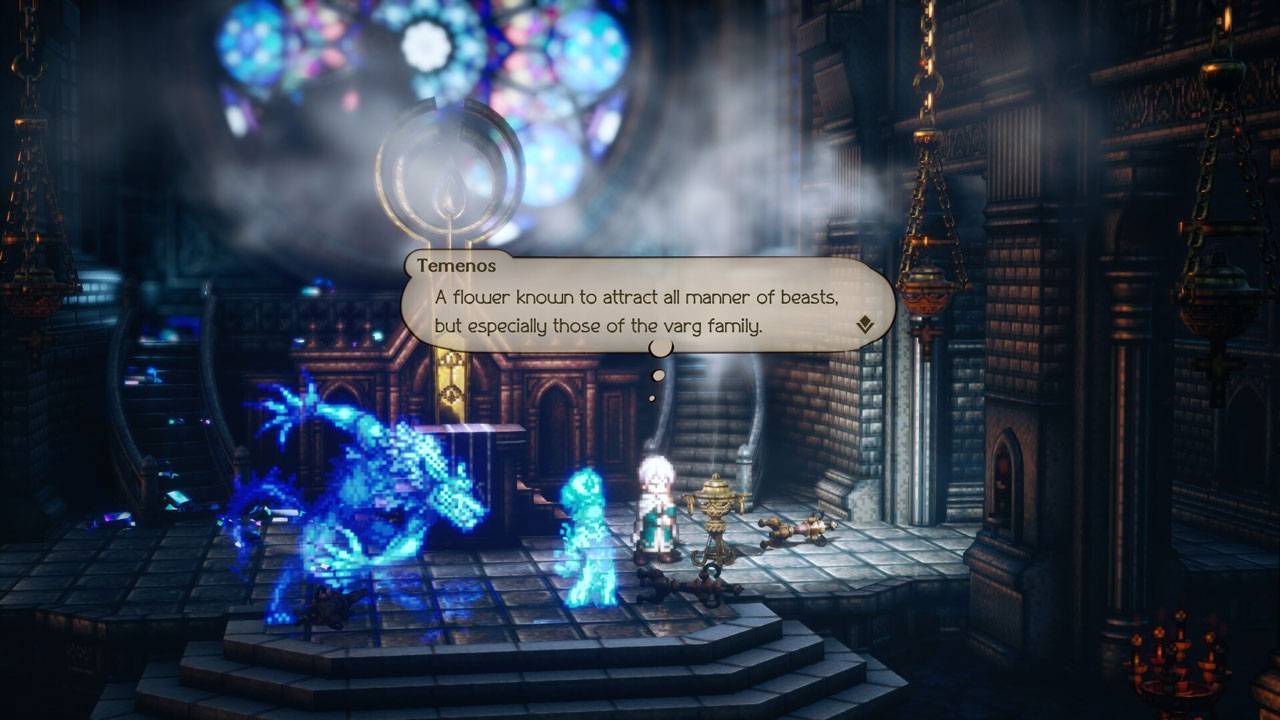
Visuals throughout the game it's nearly flawless, and some of the levels are breathtakingly beautiful. The developers clearly spared no effort in creating a stunning hybrid of retro-style visuals with cutting-edge effects.
In a similar vein, the music is equally as enjoyable. The voice cast is uniformly strong, making it an excellent complement to the game's more sophisticated writing.
Each protagonist sounds exactly how you would picture them, and there is never a moment when someone seems irrelevant in the story's context. The game's impeccable appearance won't let you feel the 50 hours you've passed until the credit rolls.
OCTOPATH TRAVELER II illustrates superbly how to revive a classic JRPG. This sequel matches the original's quality and improves upon it in almost every way.
Even if you ignore the rich simplicity of its fighting, the game's intriguing story and lovable characters will make it worth your time. The enhancements to the sequel considerably raise the bar set by the first game.
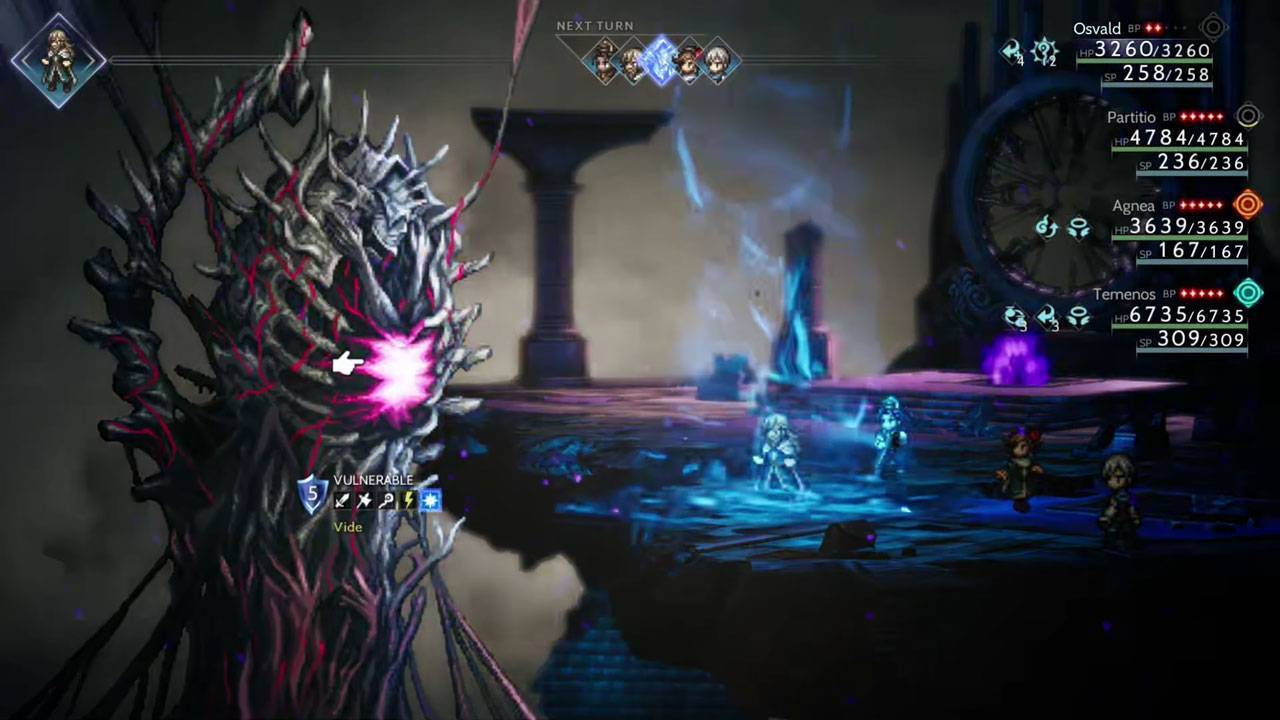
Though the attempts to tie together multiple story threads weren't splendid, its vastness, countless sidequests, dungeons, and character-building give the game a positive step forward. The battle system has a lot of depth, and the genre fans will simply adore it. Due to a few lengthy boss fights and a high volume of random encounters requiring their fair share of playing time, OCTOPATH TRAVELER II will appeal to genre veterans more than newcomers.
Senior Editor, NoobFeed
Verdict
85
Related News
No Data.

